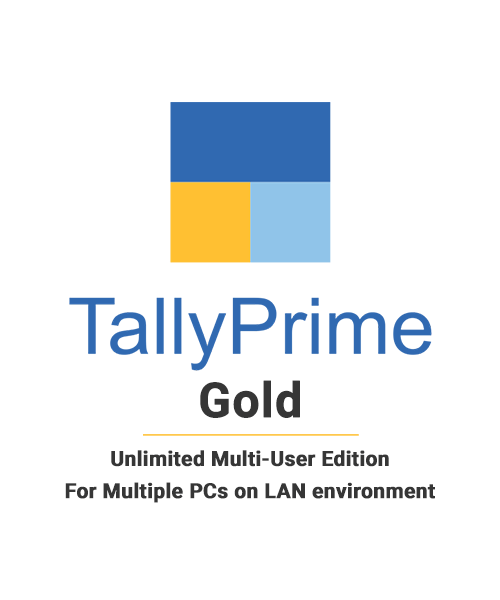
What is Tally Prime Multi User?
Tally Prime Multi User edition is nothing but the Gold Edition of TallyPrime. The Gold edition is a license for multiple users. In a LAN environment, multiple users can access the license at the same time. TallyPrime Server, in conjunction with TallyPrime, can be used to manage the concurrent use of company data.
Features of Tally Prime Multi User
Concurrent Multi-User Access
Tally Prime allows multiple users to work on the software simultaneously, increasing productivity and efficiency.
Role-Based Access Control
Users’ access can be limited based on their roles and responsibilities, ensuring data security and privacy.
Audit Trail Features
Tally Prime’s audit trail features allow users to track all changes made to transactions, providing transparency and accountability.
Multiple Companies
Tally Prime allows users to set up multiple companies within the same software, making it easier to manage multiple businesses.
Centralized Backup & Restore
Tally Prime’s centralized backup and restore functionality ensures data safety and recovery in case of system failure.
FAQs On Tally Prime Multi User
Which version of Tally is used for Multi user?
Tally Prime Silver is intended for a single user, whereas Tally Gold is intended for up to 10 users on a local area network (LAN).
What is difference between Tally single user and multi user?
The main distinction between Tally single user and Tally Multi user is the number of users who can use it. Tally single user, also known as Tally silver edition, can be installed and used on a single computer. Tally multi user or Gold edition, on the other hand, is intended for multiple users on a LAN.
Can we convert Tally Multi user to Single-user?
Under the paid rental mode, Tally Prime allows you to change the product edition from Multi User to Tally Prime Single User and vice versa.
How many users can use Tally prime multi user?
Using a multi-user license, you can have up to10 users on the same LAN environment
What is he difference between Tally Prime Silver and Tally Prime Gold?
The primary distinction between Tally silver and gold is the number of users. Tally Silver is intended for a single user, whereas Tally Gold allows up to 10 users on a local area network (LAN). It means that Tally Prime Silver can only be activated and used on a single computer.
